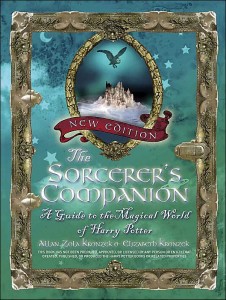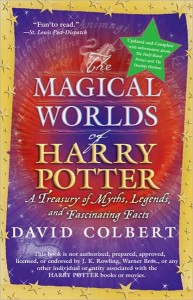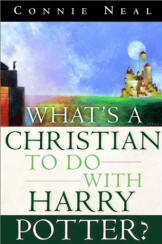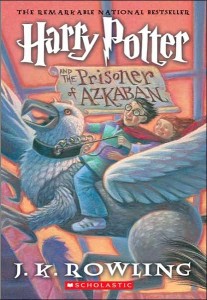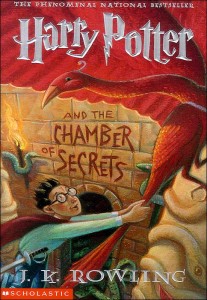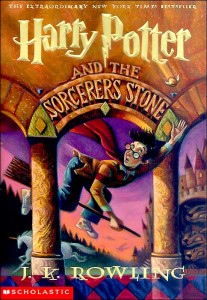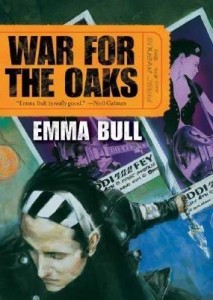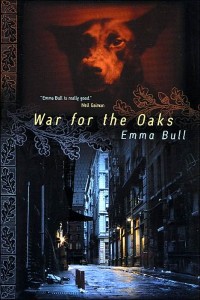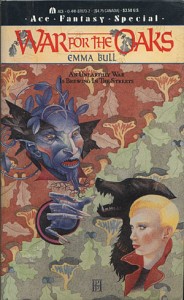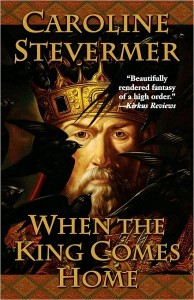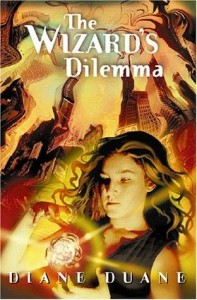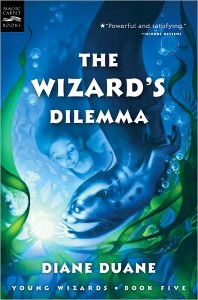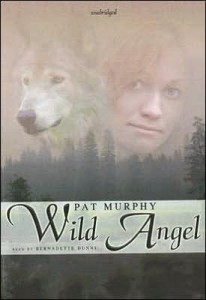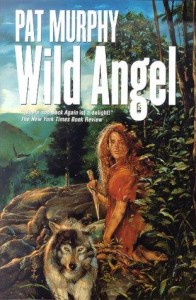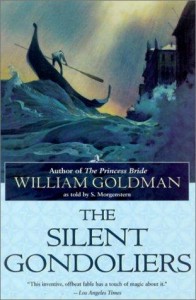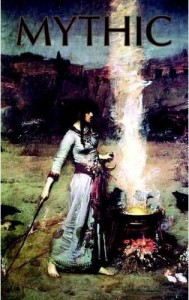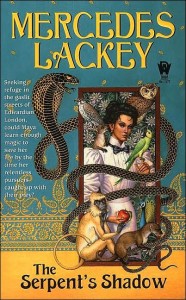Conversations With J.K. Rowling, by Lindsay Fraser (Scholastic, 2000)
What’s A Christian To Do With Harry Potter? by Connie Neal (WaterBrook Press, 2001)
The Magical Worlds of Harry Potter, by David Colbert (Lumina Press, 2001)
The Sorcerer’s Companion, by Allan Zola Kronzck and Elizabeth Kronzck (Broadway Books, 2001)
Ever since the Harry Potter books became a worldwide phenomenon, propelling both author J.K. Rowling and title character to superstar status, it seems like people just can’t get enough of the world of Harry Potter, and the fantastic elements that make up the story of an orphaned British schoolboy who discovers his own wonderful (and often dangerous) destiny as a wizard. One thing’s for certain: Harry Potter’s no longer confined to the pages of the books bearing his name. There’s a full-length feature film coming out in mid-November, board games, statues, action figures, puzzles, stickers, Legoes, candy, stuffed animals, journals, calendars, and enough merchandise to make a certain cartoon mouse very, very jealous. In a handful of years, Harry Potter has all but taken over the world.
But why? Who can account for this astounding, mind-boggling popularity, eclipsing dozens of other fantasy authors, hundreds of childrens’ books, thousands of stories drawing on the same material? Why is Harry Potter almost a universal constant, while Nita Callahan and Kit Rodriguez (of Diane Duane’s Young Wizards series) remain answers to some children’s fantasy trivia quiz? How did J.K. Rowling shoot to the top of the charts, while the venerable Diana Wynne Jones has spent decades in a pleasant mid-level obscurity, popular only among British readers and the rare resourceful American fan? Good question. My best guess is that it was just the right time and right place, sort of an invocation of zeitgeist, the spirit of the times. The conditions were just right for that one moment, striking just the proper chord within the hearts of the readers, and resonating outwards to encompass the world. Far-fetched? Nonsense. Had Rowling been a year earlier, or a year later, who knows what result her books might have struck, and what writer would be popular in her place? Just like atmospheric conditions need to be just so to create a rainbow, cultural conditions were aligned, and the next thing we know, we’re buying Hogwarts toilet paper and Hagrid-style overcoats, and begging our parents for three-headed puppies and baby dragons.
The point is, we can’t get enough to satisfy our cravings between books. We’ve had four courses in a projected seven-course meal, and the chef’s taking her own sweet time to make sure the next course is absolutely perfect.
But our stomachs are rumbling, and people start passing around the rolls and butter. That’s exactly what the books I’m about to discuss are. They’re the bread and butter to keep us from starving while we wait eagerly for the next installment of the Harry Potter feast. They explore all the various aspects of the books and their creator, expanding the universe, extrapolating from facts and rumor, and giving us something to occupy our fancies. In all but one case, they’re unauthorized by the author, but allowable under various fair use laws, taking advantage of our desire for Harry Potter to give us something a little different.
The first book I’ll bring to your attention is the only one actually authorized by Rowling and her American publisher, Scholastic. Entitled Conversations With J.K. Rowling, it’s both an overview of her books and rise to stardom, and a compilation of questions asked in various interviews she’s given over the past few years. With material drawn from O, the Oprah Magazine, Newsweek, Entertainment Weekly, and the Larry King Show, it’s everything you’ve ever wanted to know about Rowling, straight from her own experiences. What she was like as a child (oldest of two girls, she once ate Play-Doh when her sister was born), what pets she had, what her family was like (they read a lot), her experiences in school (one teacher, classifying her as ‘dim’, later became an inspiration for Professor Snape), what she likes to read, what she did after she left school (Exeter University, with a year teaching English in Paris), and so on. While it’s not exactly deep philosophical reading, it’s fascinating to hear the little details of what molded Rowling into the person she is, and the person she was when she first started writing the series. For instance, although she first thought up the initial concepts, including Harry, Ron, Hagrid, and Peeves, early on in her adulthood, it took her five years to fully plot out what she already knew would be a seven book series. It can safely be said that she had a fair idea of who was who, what was what, and what would happen before she even really got started writing the first book. While she was still married when she began writing Harry Potter and the Philosopher’s Stone, at the tender age of twenty-eight, she didn’t truly get down to business until after the marriage failed and she moved to Edinburgh, where she wrote in a cafe belonging to her brother-in-law.
It’s a thin book, with much of the page count given over to the questions asked in the primary interview, stitched together in thematic sections about childhood, school, her writing career, and her new fame. The rest of the book goes into an overview of the four books released thus far, a brief analysis of the characters and situations, and a reprinting of questions asked by the above sources to accompany the release of Harry Potter and the Goblet of Fire. You won’t find any grand secrets hiding here, no hints about the next books or things you can’t learn reading the series. There’s no shocking details of Rowling’s brief career as a CIA assassin or circus midget (both jokes, people, I promise!). It’s harmless, inoffensive, and as pleasant as a nice cup of tea with one of the world’s most popular authors. It’s fun to see where Rowling came from, and how some of her ideas took shape originally, and to get a feel for what inspired certain characters. It’s interesting from a writer’s standpoint to see how she plotted it all out in advance over years, holding it together in her head originally and later writing down vast histories and backgrounds for characters. Maybe we’ll never see Sirius Black’s childhood, but rest assured, she knows what happened. So yes, Conversations With J.K. Rowling is a fun, companionable little book that would make a great stocking stuffer for the Harry Potter fan in the family, but like Chinese food, it only briefly satisfied me, leaving me hungry an hour later. (Again with the food metaphors. Maybe I should grab some Chocolate Frogs and Every Flavor Beans before continuing….)
Our next two books cover much of the same thematic ground, though they take somewhat varying paths along the way. The Magical Worlds of Harry Potter bills itself as “a treasury of myths, legends, and fascinating facts,” drawing its inspiration from the many mythological, supernatural and folkloric aspects found within the Harry Potter universe. It presents its material in the form of questions, ranging from “Why Are Harry And Cedric Like Knights Of The Round Table?” to “Why Is Each Malfoy Aptly Named?” to “Where Do Those Names Come From?” to “Did Alchemists Really Search For A Magic Stone?” and dozens of others. Intelligent and sly, this book manages to enlighten without getting too full of itself, pointing out the origins for witches, wizards, three-headed dogs, snakes, curses, trolls, and much more. By finding a question to ask in each heading, it attracts attention, and goes on to explain itself. Why, for instance, Hagrid would get Fluffy from a “Greek chappie” and why Sirius Black might become a large black dog. It’s packed full of information, touching on all aspects of Harry Potter’s world, showing the multiethnic and much-varied sources of inspirations and origins of the creatures, terms, themes, and people who make up the rich tapestry of the setting. Even the margins contribute, with frequent sidebars offering bits of trivia, historical interest, or notes to intrigue even the casual reader. It’s fun, and should be of interest to anyone with the slightest interest in mythology or folklore, even those unfamiliar with the books in question.
Moving right along, we have The Sorcerer’s Companion, which addresses many of the same themes and aspects, only in the form of an alphabetically-organized dictionary, ranging from amulets to zombies, with everything from arithmancy to herbology, grindylows to dragons, pixies to magic brooms, witches to werewolves. Again, the subject matter is informed and intelligent, covering each topic with examples taken from the Harry Potter books, and then delving into their literary, mythological, and historical roots. With accompanying illustrations, and a thorough bibliography citing both print and online sources, it comes off as a rather handsome, useful offering to all lovers of folklore. While it could stand quite well on its own without riding the Harry Potter gravy train, it does benefit from the association. Combined with the above book, it makes a lovely reference set, and one I find very little fault with. With everything from how to perform arithmancy yourself, to a brief guide on interpreting tea leaves, to rather in-depth discussions on the various kinds of magicians, wizards, and witches found in literature and in history, The Sorcerer’s Companion succeeds in providing both entertainment and enlightenment.
This isn’t to say that one book is better than the other; on the contrary, they complement and reinforce one another, overlapping at times but covering substantial ground on their own. The Sorcerer’s Companion has a much prettier cover, one bound to catch the eye from the shelf, but they both stand on an equal footing.
Finally, we come to the most interesting and unusual Harry Potter-related book in the lot. What’s A Christian To Do With Harry Potter? is an intriguing, highly intelligent, rational look at both the pros and cons of Harry Potter from the viewpoint of a Christian, in this case author Connie Neal, who’s covered the subject matter for Today’s Christian Woman and the 700 Club website. She examines both sides of the Harry Potter debate with an informed, critical eye, debunking the myths linking Harry Potter to Satanism and evil, and giving the reader more than enough information to make an educated decision based not on hearsay and criticism, but on fact and personal preference. Drawing extensively from the Bible, putting Harry Potter against the Scriptures, she shows how the books can be used to teach, educate, and suggest a right course of action for children.
First off, she covers both sides of the debate, laying out arguments for and against Harry Potter, drawing from extensive sources and essays to show just how far-ranging the topic is. She displays enough examples to show that there is no one consensus, and why some people favor the books and others shun them. One rather telling essay was simply a list of the top ten things learned from the Harry Potter books, from an eleven-year-old reader. So where do people stand? Everywhere, it would seem.
Next, the author goes into a brief overview of the books, laying out the basic characters and terms succinctly, so that even a casual reader will understand who Dumbledore is, what a Slytherin is, and how Quidditch works. There’s nothing new in this chapter to the experienced reader, but it lays the groundwork for the arguments to come in the next chapter, “Classic Fantasy, or Blatant Witchcraft?” In this chapter, Neal cleverly shows how one person can look at the books and see innocent children’s fantasy, and someone else can see a recruiting tract for Satan Worshippers Of The World. It’s all in the viewpoint, and how you approach it. And sometimes, once made aware of this ‘new’ viewpoint, someone with an established opinion is able to understand both sides. Importantly, though, is the distinction made, that to condemn Harry Potter is to condemn the Chronicles of Narnia, A Christmas Carol, or The Lord of the Rings. Why don’t more Christians decry a story that deals with ghosts, speaking with the dead, astral travel, and the supernatural, instead of accepting that Dickens is telling a story of redemption? Why aren’t they up in arms over a series featuring a White Witch, talking animals, and lands beyond the here and now, instead of reading the Narnia books as the Christian allegory that they are? It’s all in the viewpoint, the social conditioning, and personal beliefs. Harry Potter is no worse than the above books, but because the series is seen differently, some people treat it differently.
Then we’re treated to a look at -why- children love Harry Potter, and what specific needs the books fill in their hearts, and why these are necessarily bad things. What kid wouldn’t want to feel special, empowered, older, stronger, famous, loved, or wanted? How many can identify with Harry for the life he leads or the destiny he holds? The books appeal to their thrill of victory, their deeply felt emotions, their desire to be the best they can be, a desire to belong, a need to conquer fear and so forth.
My favorite chapter would have to be the next one, which quite cheerfully asks, “What Would Jesus Do With Harry Potter?” Spinning a riff off of the popular WWJD merchandise, it explains that he’d encourage the readers to decide for themselves. That he might use the Harry Potter stories as parables for his own teachings, ask what they’d see if they looked in the Mirror of Erised, and show how it related to their internal struggles, compare the goodness and trustworthiness of Dumbledore to the goodness and trustworthiness of God to show the need for such a figure in our lives, or even compare Harry’s discovery of a magical world beyond the mundane to a Christian’s discovery of a heaven beyond their world. In short, there’s plenty that Jesus might do on a positive level. There’s more in this chapter than I could cover here, but it’s clear that Neal has the argument down pat, showing how the Scriptures can interpret and refute many of the arguments. But in short, she stresses the importance of making up your mind free of outside influences.
After that, Neal goes into details to refute many of the subtle snares found in the debate. For instance, she shoots down some aspects of the argument against Harry Potter by pointing out that the source material for some of the accusations was the Onion, an online newspaper that parodies and satires just about everything, and has no basis in truth. She sums up the chapter by suggesting that the reader have nothing to do with stupid or foolish arguments, aim to be logical and consistent, and ask God for wisdom. Another important chapter follows it, in which she outlines many ways to protect children from occult influences in the real world, including a whole host of Nevers. (Never try to consult the dead, never offer your children as a human sacrifice, never cast spells….)
We then have chapters on engaging in our culture without disobeying God, and relating Harry Potter to the Judeo-Christian ethical system, showing how the events of the books may be used to teach morality, the importance of following your heart, and when it’s okay to break one rule to uphold a higher law. Other chapters go into detail on using the books to help children grow into goodness, and using the books to preach the Gospel.
I’ll be the first to admit that I’m not a very religious person, and my tastes don’t always lean towards Christianity. There are aspects of the book I feel uncomfortable with, especially where she condemns all witchcraft in favor of the Christian god, and where she gets just a little too preachy for my tastes. But objectively speaking, this book is fantastic, fascinating, and utterly involving. It teaches, educates, enlightens, and never says something without backing it up. This is the perfect book to give to those people who might have been avoiding Harry Potter ‘because of all them witches and wizards’ or because it promotes magic and fantasy. In its guise as a teacher, What’s A Christian To Do With Harry Potter? succeeds so well that it overcomes my natural distrust of blatant religious beliefs. Even if you’re not Christian, you might enjoy seeing how the Harry Potter books can be used to promote positive thinking, and help children learn a proper set of values. Highly recommended, and the best book of the ones reviewed in this article.
